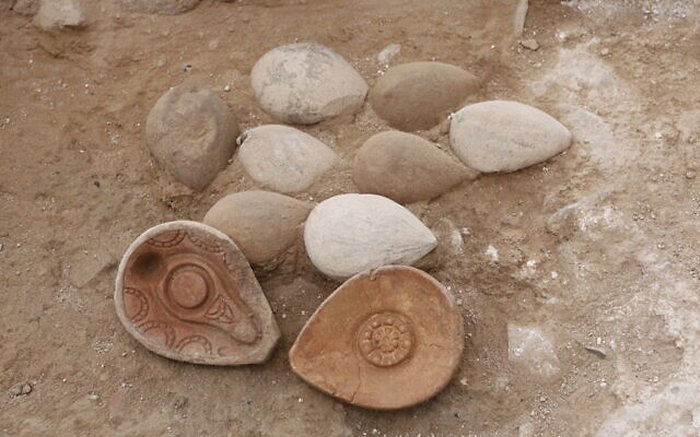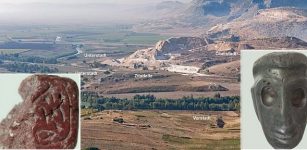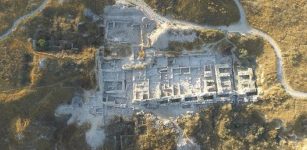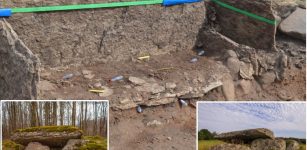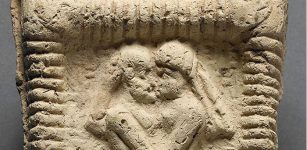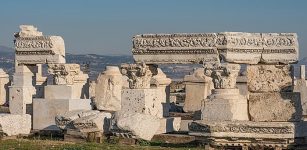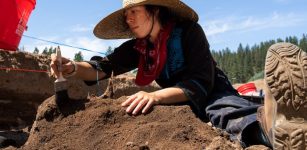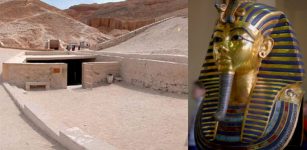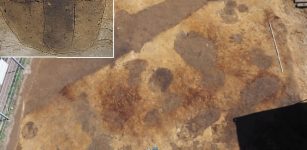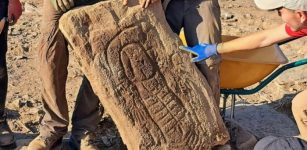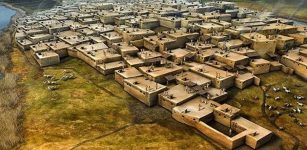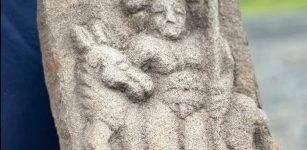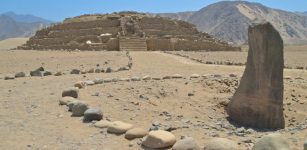Huge Ancient Ceramic Workshop With Hundreds Of Stunning Artifacts Solves An Archaeological Mystery In Israel
Jan Bartek - AncientPages.com - Scientists are truly baffled. Not only because they discovered hundreds of very well-preserved ancient ceramic lamps and stunning terracotta figurines, but also because this particular discovery has now solved an archaeological mystery. Sometimes one must wait patiently before answers are revealed, and this finding shows many mysteries can be solved, sooner or later.
While excavating in Beit Shemesh, a city located west of Jerusalem in Israel, archaeologists have unearthed a huge, ancient ceramic oil-lamp workshop, one of the largest of its kind.
Ceramic oil lamps and stone lamp molds for their production were found along with terracotta figurines, December, 2020. Credit: Dafna Gazit /Israel Antiquities Authority
Two of the lamps bear the symbol of the menorah, a sacred candelabrum with seven branches that was originally used in the First and Second Temples in Jerusalem. The word “menorah” is Hebrew for “lamp,” and the multi-branched candelabra remains an important religious symbol in Israel.
All of the artifacts were produced between the 7th and 11th centuries A.D.
“The festival of Hanukkah is a wonderful opportunity to tell the public about the recovery of these oil lamps, which was the main method of lighting in ancient times,” the archaeologists said in a statement.
In light of the importance of the find and its location, the authority and the ministry plan to preserve the site and incorporate it into a large park that will be open to the public.
This find yields important new information on Jewish and early Christian life during the Late Roman period, they said.
This finding solves an archaeological mystery because it’s actually the second time the artifacts have been unearthed! The Palestine dig site was abandoned and its location lost shortly after Israel's founding in 1948. The location of the site was forgotten and so were the ancient, used ceramic lamps and other artifacts.
"In 1934, archaeologist Dimitri Baramki, an inspector on behalf of the Department of Antiquities during the British Mandate, discovered a water cistern in the region of Beit Shemesh. On excavating the cistern, he was surprised to uncover a huge quantity of intact ancient oil lamps bearing animal and plant motifs and geometric designs.
The lamps were dated to the Late Roman period (third to fourth centuries CE) and became known as “Beit Nattif lamps” after the name of the nearby village. Together with the lamps, Baramki recovered stone lamp molds and a wide variety of pottery figurines depicting animals, horse-riders, women, and birds.
After the British Mandate-era discovery, the location of the cistern was lost and has remained a mystery, despite all efforts to find it – until now,” the Jerusalem Post reports.
“As part of the Beit Shemesh development program, we examined an area on the edge of the ancient remains of Khirbet Beit Nattif,” explained excavation directors Moran Balila, Itai Aviv, Nicolas Benenstein and Omer Shalev.
“We uncovered a water cistern that looked, at first sight, like many others in the region. But to our surprise, excavation beside the cistern began unearthing massive quantities of oil lamps, stone lamp molds and figurine fragments.”
Oil lamp molds from the Islamic period (mid-7th-11th century) uncovered in the summer 2020 excavation of ancient Tiberias. (Tal Rogovenski/Hebrew University)
When the archaeologists entered the cistern, which was intact, they were amazed to find that they recognized it from photos appearing in Baramki’s excavation publication. The cistern also contained items left behind by Baramki himself, including leather baskets used to extract soil and an empty metal box.
According to the Hebrew University, this region suffered a series of earthquakes during the 11th century. Oren Gutfeld, the head of the Israel Archaeological Services explained that scientists discovered fallen ornate stone pillars around the well, which he believes was the center of a lush courtyard.
Hundreds of ancient oil lamps were unearthed. Credit: Tal Rogovenski/Hebrew University
“The debris was excavated and seems to be impressive testimony to the earthquake of 1033 in which Tiberias was destroyed,” Gutfeld told The Times of Israel.
Unfortunately, it may take a while before we can admire the exhibited ancient ceramic lamps. Like many other museums worldwide, the Israel Museum is forced to limit crowds in order to comply with coronavirus regulations. Visitors must book a time and buy tickets in advance.
See also: More Archaeology News
Normally, the museum would be bustling with visitors on Hanukkah break but has seen only 5,000 visitors a day in the first eight days since reopening.
Those who do make it to the museum will also be treated to the largest collection of menorahs in the world, which is on display in the museum’s permanent collection, museum director Ido Bruno said in a statement.
Written by Jan Bartek - AncientPages.com Staff Writer



